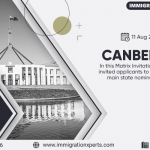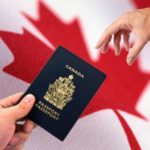
Skill Assessment Pathways for Engineers Australia: Complete Guide 2025
If you're an engineering professional aiming to move to Australia, securing a successful skills assessment through Engineers Australia (EA) is a critical step in your visa process. EA provides several assessment pathways depending on your educational background and professional experience. Selecting the right pathway is key to ensuring a smooth and successful outcome.
Main Skill Assessment Pathways Offered by Engineers Australia:
1. Accord-Based Assessment Routes
If your engineering qualification comes from a country that has signed certain international engineering agreements, you might be eligible for a simplified assessment process.
A. Washington Accord
- Who Qualifies? Applicants with a Bachelor’s degree or higher in engineering from a country recognized under the Washington Accord.
- Example Countries: Australia, USA, UK, Canada, India (from 2014), New Zealand, South Africa, China (provisional), and others.
- Qualification Requirements: A four-year engineering degree considered equivalent to Australian standards.
- Required Documents: Academic certificates, mark sheets, identity proof, and English proficiency. CDR not needed.
B. Sydney Accord
- Who Qualifies? Candidates with Engineering Technology degrees from Sydney Accord countries.
- Qualification Requirements: Typically, three-year engineering technology diplomas or degrees.
- Required Documents: Degree proof, ID, English language test results. No CDR is required.
C. Dublin Accord
- Who Qualifies? Diploma holders or associate degree graduates from countries in the Dublin Accord.
- Qualification Requirements: Two to three-year diplomas in engineering.
- Required Documents: Similar to above—basic documents without a CDR.
2. Competency Demonstration Report (CDR) Pathway
This is the most widely used route for engineers whose qualifications are not recognized under any international accords or are from non-signatory nations.
When Should You Choose This Pathway?
- If your education was completed in a non-signatory country.
- If your degree is not aligned with Australian academic standards.
What Needs to Be Submitted:
- Three Career Episodes (CEs): Real-life engineering tasks you've handled.
- Summary Statement (SS): Explains how your experiences meet EA's competency requirements.
- CPD (Continuing Professional Development): A summary of your learning and training post-graduation.
- English Test Results: IELTS, TOEFL, or PTE Academic.
- Personal and Academic Proofs: Transcripts, degree certificate, passport, and resume.
Engineering Occupations You Can Apply Under:
- Professional Engineer
- Engineering Technologist
- Engineering Associate
- Engineering Manager
3. Australian Engineering Qualification Pathway
If you’ve graduated from an accredited Australian university with an engineering degree, this is the most straightforward route.
Requirements:
- An approved qualification from a recognized Australian institution.
- Proof of English proficiency (if applicable).
- Transcripts and graduation certificate.
- No need to submit a CDR or check for accord alignment.
4. Additional Services Provided by Engineers Australia
- Fast Track + Migration Skills Assessment: For faster processing of applications.
- Skilled Employment Evaluation: Helps gain additional PR points based on work history.
- Overseas PhD Recognition: Evaluation of foreign PhD qualifications.
Final Thoughts:
Choosing the correct Engineers Australia assessment route depends on factors like:
- The country and institution where you studied.
- The level and type of your engineering qualification.
- Whether your course is recognized under an international engineering accord.
Still unsure which path to choose? Let the professionals guide you. Apical Immigration Experts offer complete support for your Engineers Australia assessment—from accurate CDR writing to a fully managed application process.





